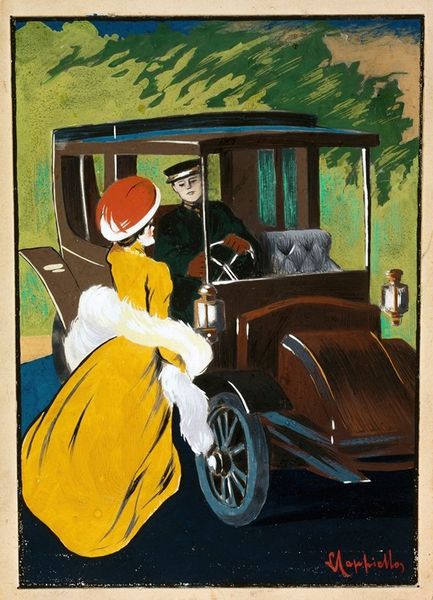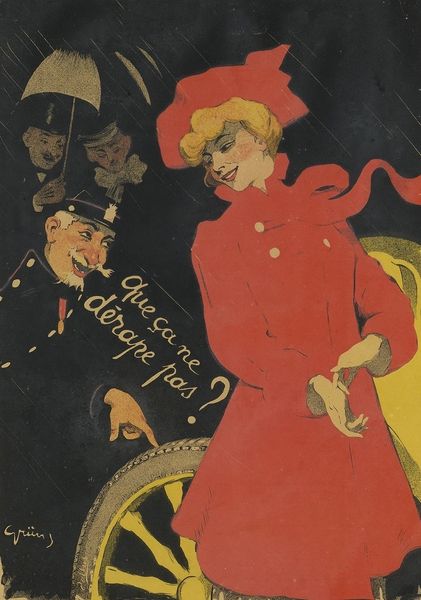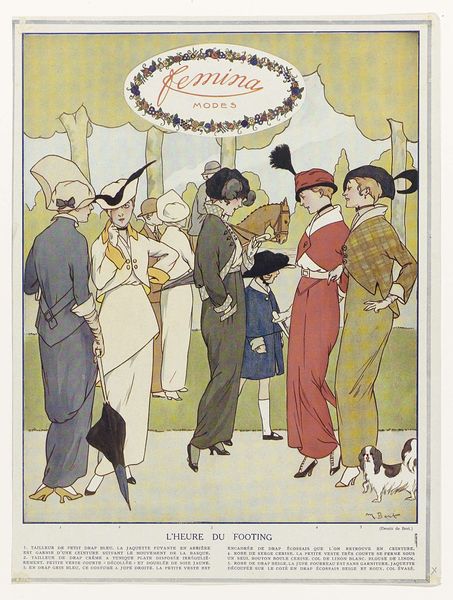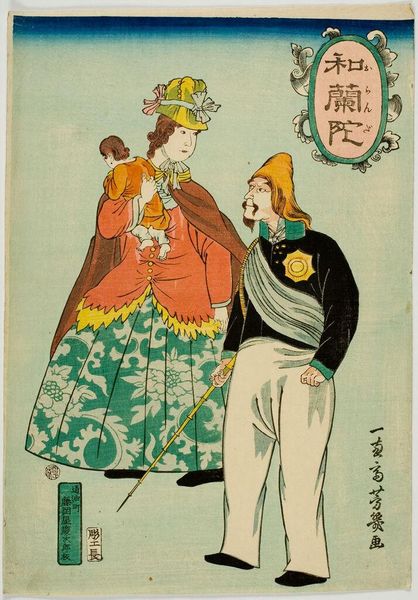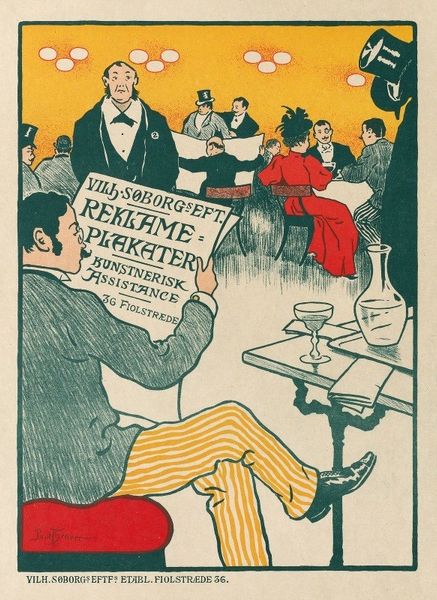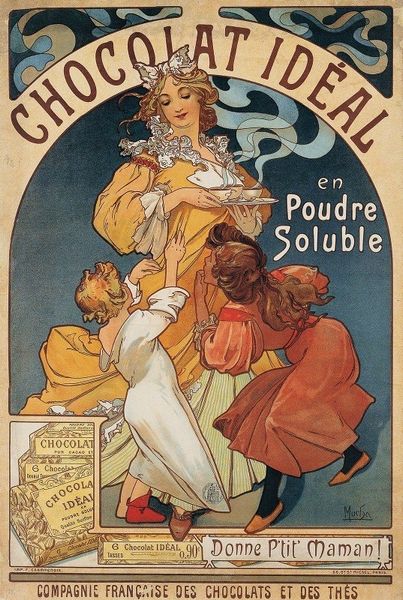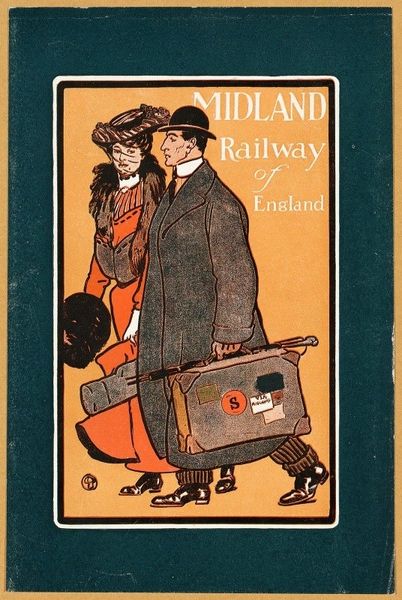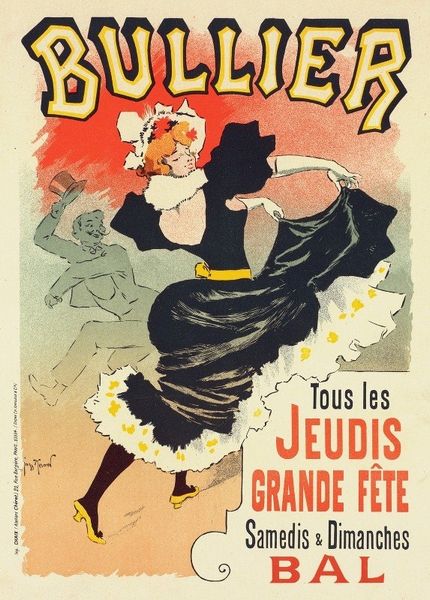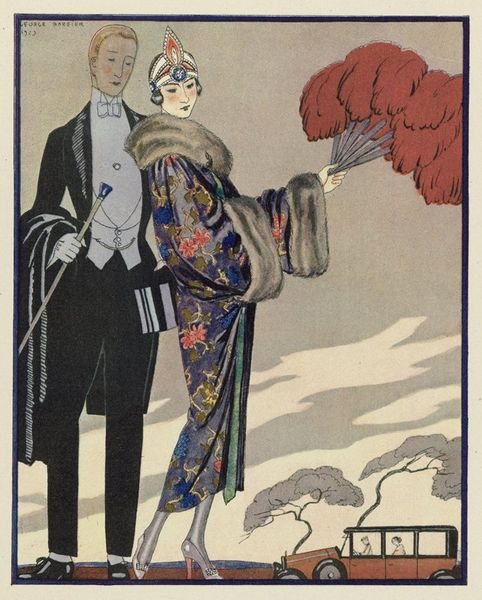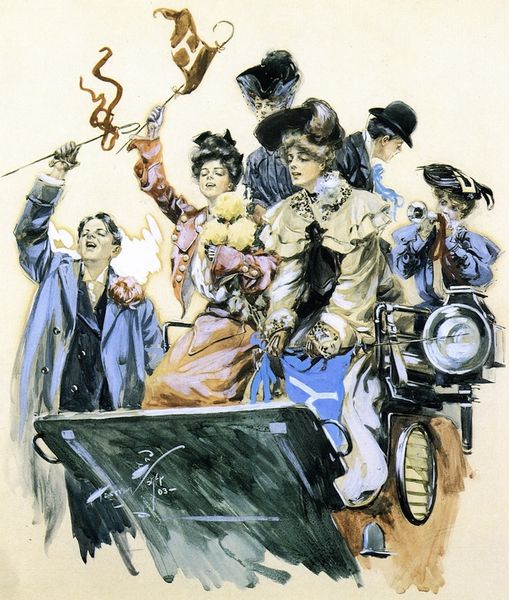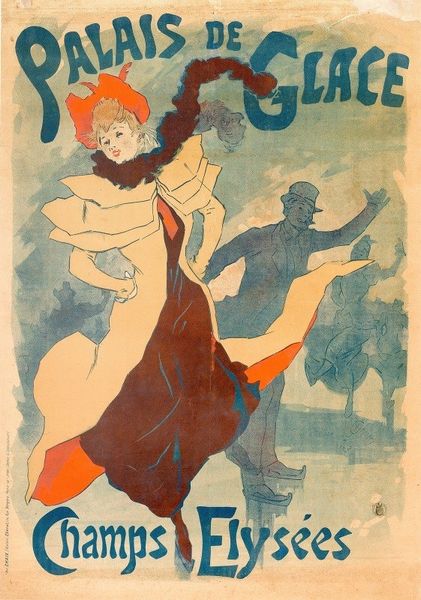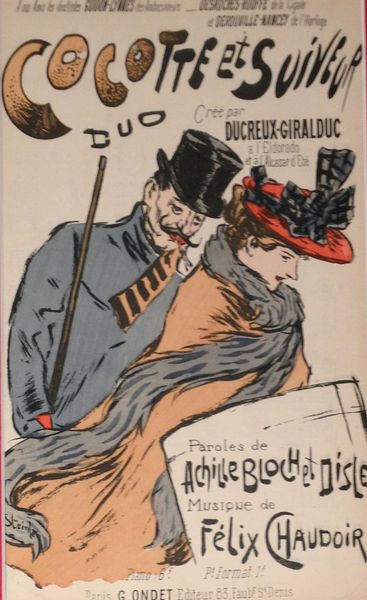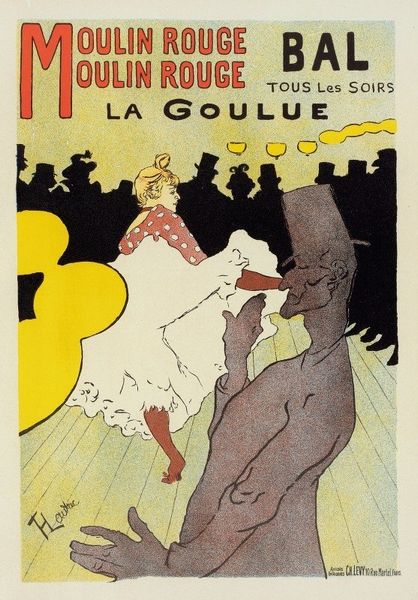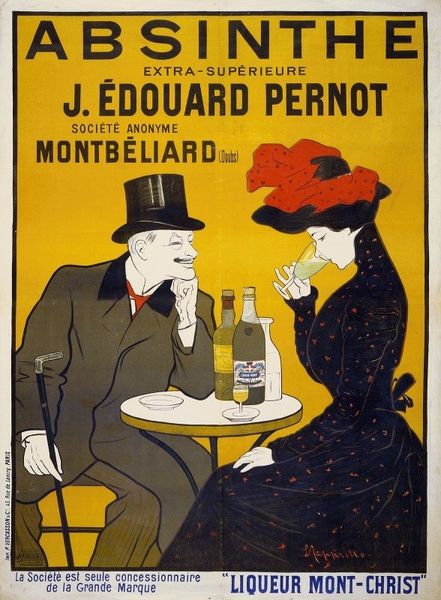
graphic-art, oil-paint, poster
#
portrait
#
graphic-art
#
art-nouveau
#
oil-paint
#
oil painting
#
watercolour illustration
#
poster
#
portrait art
Copyright: Public Domain: Artvee
Curator: Leonetto Cappiello created this vibrant poster, “Automobiles Charron Ltd.,” around 1906. The lithographic poster captures a scene of early motoring elegance. Editor: The immediate impression is one of bright leisure. A bold yellow dress juxtaposed with that quirky red hat immediately draws the eye. It suggests wealth and modernity. Curator: Cappiello, known for his posters, understood the visual language of advertising. He uses bold colors and simplified forms, aligning with the Art Nouveau aesthetic. Look at the materiality of the ink, the flatness—it was designed for mass production and quick consumption. The means by which the company would communicate their brand and create value in consumer's mind. Editor: And what is communicated? I see an allegorical pairing here. The driver represents the industrious age, focused and uniformed, contrasted with the woman's frivolous, attention-grabbing attire. That dress signifies aspiration, luxury—linking the automobile to a newfound sense of freedom. She’s like a beacon, promising an escape. The colour scheme is so intentional, giving it immediate recall in a quick advertising context. Curator: Agreed, although this freedom comes at a cost, considering the working conditions involved in the manufacture of these machines and materials needed to create posters themselves! It prompts a crucial question: Who benefits, and at what expense? Are the workers celebrated? Or just the consumer and company? Editor: The symbolism, for me, cuts deeper. Automobiles were new; their representation signifies societal progression towards individualisation. That hat has roots, it takes on symbolic meaning that references figures such as Marianne that embodies revolutionary sentiment through these colours. Curator: Even so, let’s not forget the labor behind these cultural objects. Without understanding the conditions, our iconographic readings can romanticise history rather easily. This all seems very different when you remember the process behind a machine made from limited resources. Editor: That's fair. Thinking about those perspectives does add nuance. It is a pretty effective advertisement piece and brings to life what that new technology could allow those with purchasing power. Curator: Considering all this, I leave with questions regarding accessibility. These early vehicles were aspirational icons. This exploration helps us better contextualize art’s relationship to the wider society and its manufacturing processes. Editor: It is fascinating how a simple poster can ignite so many thoughts on social change, and I feel as if I've really got under the poster's imagery. The poster's bright images will stick in my head.
Comments
No comments
Be the first to comment and join the conversation on the ultimate creative platform.
